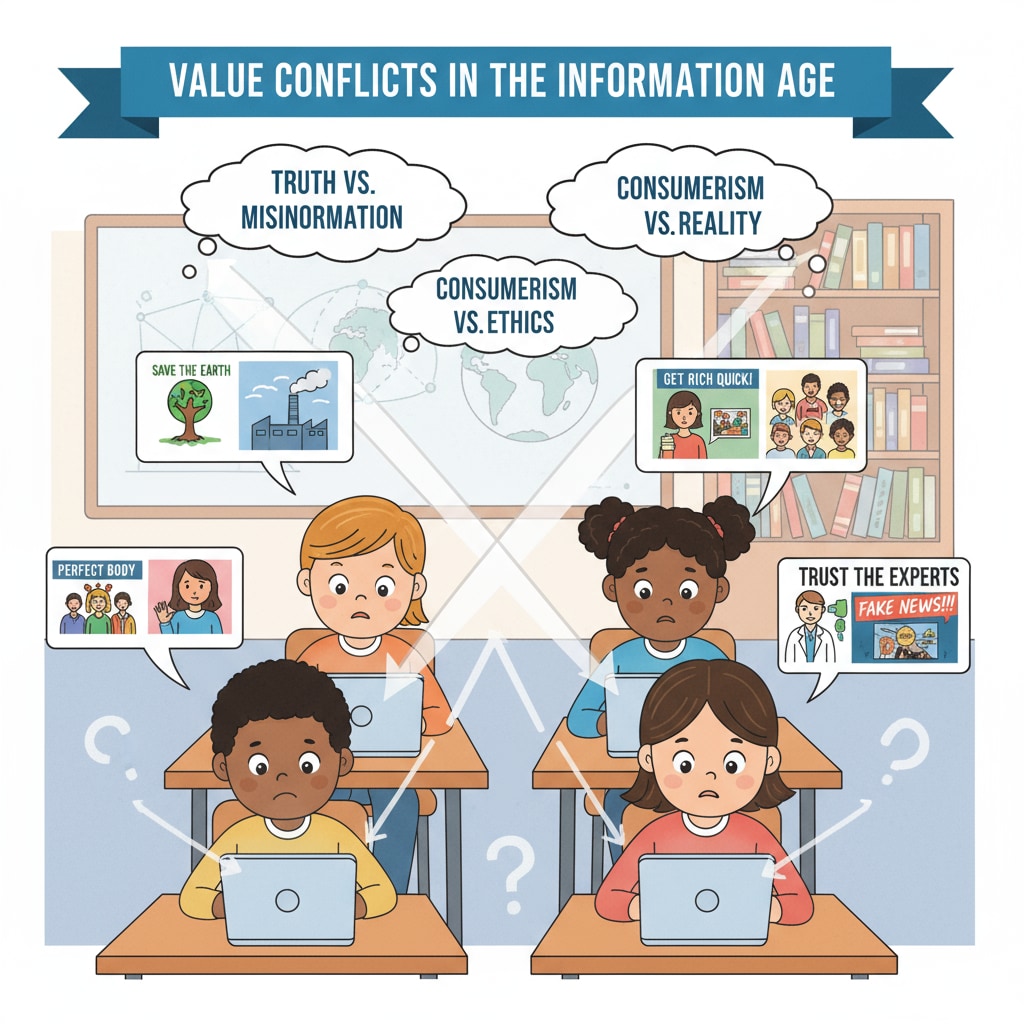In the age of information explosion, education reform is inevitably confronted with values conflicts. The contemporary society, where information is everywhere, presents both unprecedented challenges and opportunities for K12 education. As students are constantly bombarded with a vast amount of information, it is crucial to find a way to balance educational content and values transmission, guiding them to navigate through the information洪流.

The Challenges of Values Transmission in the Information Age
In this digital era, the sheer volume and speed of information dissemination pose significant challenges to traditional values education. Students are exposed to a wide range of ideas and values from various sources, which may conflict with the values taught in schools. For example, online platforms often promote individualism and consumerism, while schools typically emphasize collectivism and moral principles. As a result, students may become confused about what values to uphold.

The Need for Cultivating Critical Thinking
To address these values conflicts, it is essential to cultivate students’ critical thinking skills. Critical thinking enables students to analyze and evaluate information objectively, distinguish between right and wrong, and make informed decisions. By teaching students how to question, reason, and think independently, we can help them resist the negative influence of false or harmful information. For instance, students can be taught to examine the source, credibility, and motives behind the information they encounter.
Enhancing Media Literacy in K12 Education
In addition to critical thinking, media literacy is another key aspect in the information age. Media literacy equips students with the ability to understand, analyze, and create media content. With the prevalence of social media and digital platforms, students need to know how to use these tools responsibly. Schools can incorporate media literacy education into the curriculum, teaching students about media bias, advertising techniques, and the impact of media on society. This way, students can become more discerning consumers of information.
Balancing educational content and values transmission in the information age is a complex but necessary task for K12 education. By respecting traditional values, cultivating critical thinking, and enhancing media literacy, we can help students develop a strong value system and thrive in the digital world. Education reform on Wikipedia Information age on Britannica
Readability guidance: The article uses short paragraphs to present ideas clearly. Each section focuses on a key aspect related to education reform in the information age. Lists are used sparingly to highlight important points. The passive语态 is kept to a minimum, and transition words are used frequently to enhance the flow of the article.


